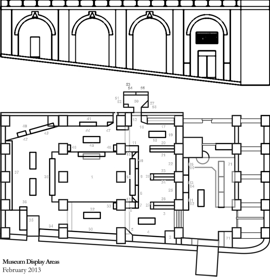Yamato battleship (Minic ships, second issue): Difference between revisions
mNo edit summary |
mNo edit summary |
||
| Line 5: | Line 5: | ||
This Minic Ships model is of the Japanese battleship IJNS Yamato, lead ship of a class of two, which with her sister ship IJNS Musashi were the largest battleships ever built at 65,000 tons. | This Minic Ships model is of the Japanese battleship IJNS Yamato, lead ship of a class of two, which with her sister ship IJNS Musashi were the largest battleships ever built at 65,000 tons. | ||
the Yamato was a significant symbol of national pride, symbolising the power of Imperial Japan. Both were destroyed in WW2. | the Yamato was a significant symbol of national pride, symbolising the power of Imperial Japan. Both ships were destroyed in WW2. | ||
The Hong Kong model produced by Hornby under the Minic Ships name has a red plastic bottom fitted with two plastic rollers. It is also marked 'HONG KONG'. | The Hong Kong model produced by Hornby under the Minic Ships name has a red plastic bottom fitted with two plastic rollers. It is also marked 'HONG KONG'. | ||
Revision as of 16:18, 4 November 2011
| Exhibit |
|---|
Yamato battleship (Minic ships, second issue) |
 |
| location: |
A 1:1200 second-issue model of the Centaur-class HMS Bulwark aircraft carrier, part of the Minic Ships range produced by Hornby between 1976 and 1980.
Triang Catalogue Number: M744
This Minic Ships model is of the Japanese battleship IJNS Yamato, lead ship of a class of two, which with her sister ship IJNS Musashi were the largest battleships ever built at 65,000 tons. the Yamato was a significant symbol of national pride, symbolising the power of Imperial Japan. Both ships were destroyed in WW2.
The Hong Kong model produced by Hornby under the Minic Ships name has a red plastic bottom fitted with two plastic rollers. It is also marked 'HONG KONG'. It was released as part of the 'Fightng Ships' line up along with the:
The model has a red underside, grey body, tan deck and grey superstructure.
IJN Yamato's commissioned period was 1941-1945 (sunk in action).
Culture and media
The Yamato still occupies a significant place in the Japanese psyche. The Yamato Museum in Japan has a one-tenth scale model of the battleship, and in the cult 1974 Japanese science-fiction anime series "Space Battleship Yamato", the lost wreck of the Yamato is retro-fitted with a warp drive to convert it into a spaceship used to defend the Earth.


